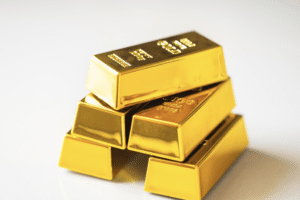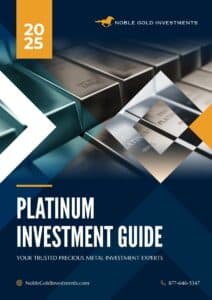You’ve probably heard an older generation compare the prices of goods now to the prices they grew up paying. It’s true! In the United States, inflation has dramatically impacted the costs of material goods and food, increasing them by several hundred percent over the past several decades.
Currently, we’re living through a period of exaggerated inflation, meaning our dollars are rapidly becoming less and less valuable. Even low inflation rates can erode currency’s purchasing power when compounded over time.
It’s hard to know what to do with your savings when inflation is rising. Interest rates on savings accounts just can’t keep pace with inflation. Every day your savings sit in an account; you’re losing money.
This article will offer some options for hedging your portfolio against the perils of inflation.
What Is Inflation?
Inflation occurs when a currency’s purchasing power decreases, leaving a broad increase in the prices of goods and services. Under inflation, something that once cost a dollar may now cost two dollars. This is a natural feature of the free market and usually compounds over time. When dramatic inflation occurs rapidly, it’s called hyperinflation.
For example, a brand new Ford Mustang cost $2,368 in 1964. In 2022 a brand new Mustang’s starting price is $37,290. Because this exponential price increase is consistent across car brands for the same timeframe, it demonstrates that inflation has occurred.
What Causes Inflation?
Some degree of inflation is a natural feature of the free market. Inflation is continually occurring to some degree, so we are referring to the rate of increase over a given period.
In a 2022 interview with U.S News, ALINE Wealth senior analyst Brian O’Leary said, “Inflation is normal. We don’t have to fear the fact that inflation exists, and in fact, a little bit is healthy for the economy. The issue becomes what amount of inflation is appropriate.”
Many factors influence the rate of inflation. These include economic growth, money supply expansion, international exchange rates, government policies, Management of the National Debt, and consumer demand.
In a growing economy, unemployment drops, and wages rise. People become empowered to spend more on goods and services, creating more demand and more jobs. An inflation rate of 2-3% demonstrates a robust and lively economy. Economic growth creates what is known as demand-pull inflation.
Expanding the money supply can cause inflation because demand increases with more money circulation. When demand goes up, so do prices.
International exchange rates can also cause inflation. If the US Dollar goes down in relation to other currencies, its purchasing power decreases in the global market.
Government Policies and Debt Management practices can influence inflation by putting tax pressure on large corporations. The burden of these additional costs is then passed onto consumers.
What Is Hyperinflation?
Hyperinflation occurs when the inflation rate breaches 50% within a specific period.
In the 2010s, Venezuela experienced the government overspending and overprinting its currency. Their inflation rate skyrocketed to 69% by 2014.
Recently, food and beverages have experienced the largest increase, with prices doubling every two weeks.
How Inflation Reduces Buying Power
In a healthy economy, the economic growth rate will match the inflation rate. Wages will rise in tandem with the cost of living, allowing people to maintain the same lifestyle.
However, if inflation exceeds economic growth, people lose their purchasing power. If the prices of consumer goods rise faster than wages, people will not be able to afford their lifestyles anymore. That is an inflation rate that could lead to a recession.
When prices rise, money becomes less valuable because you need more of it to purchase the same items.
What Does It Mean To “Hedge” An Investment?
Hedging is a widely used term, but what does it mean? “Hedge your bets” means taking preventative measures against total losses. Hedging is actively putting your eggs in more than one basket.
In investment terms, hedging is a risk management strategy. For example, if you’re heavily invested in a commodity, you could hedge that investment by buying shares of an opposite-performing commodity. That way, no matter which way the market goes, you have holdings that will increase.
If your goal is to hedge against inflation, the first thing to do is look at investments that perform well under inflation. Some investments are even helped by inflation!
How Does Hedging Work?
Hedging works by reducing the level of risk in your overall portfolio. For example, bond values may decrease in a year when stock values increase. If you invest in both, your gains and losses will average out.
Hedging does not mitigate the risk of losses. However, on the opposing side, it also reduces potential gains.
That being said, creating a robust, diverse portfolio with hedge investments that perform differently is always well-advised.
What Are The Best Hedges Against Inflation?
Under inflation, the dollar becomes less valuable. Any money in a savings account will lose value. Long-term bonds also perform poorly under inflation. Therefore, a way to hedge against inflation is to make investments correlated with the U.S. Dollar.
Gold
Gold has traditionally been a safe investment against inflation. As inflation rises, gold prices tend to go up accordingly. As a tangible asset with intrinsic value, its market value tends to appreciate over time.
Of course, gold is not immune to extreme market fluctuations, but it is still considered a good long-term hedge against inflation.
Silver
Silver’s market value, like gold, is inversely correlated to the U.S. Dollar. For this reason, silver is also considered a good hedge against inflation. Silver tends to follow the market trends of gold, but it does perform slightly differently.
The Gold-Silver Ratio (GSR) calculates how many ounces of silver it would take to purchase one ounce of gold. Currently, the GSR is at a historic low of 79. It would take 79 ounces of silver to buy one ounce of gold, meaning silver is currently undervalued compared to gold. It could be a great time to invest, before the market corrects itself and silver price matches gold once again.
Precious Metals
In line with gold and silver, precious metals are also generally a safe long-term investment. The value of precious metals tends to move in tandem with inflation. This is not true 100% of the time, so it’s wise to diversify across metals.
Until the Taxpayer Relief Act of 1997, the U.S. government did not include precious metals in tax-deferred IRA accounts. Currently, gold, silver, platinum, and palladium can be part of a retirement portfolio in special custodial IRA accounts.
Cryptocurrency
With cryptocurrency gaining traction, it could be a strong hedge against inflation. That said, having existed only since 2009, there hasn’t been much time to track its behavior in the market.
Cryptocurrency is so new to the investment world, so it is difficult to say how it will respond to inflation. Crypto has characteristically volatile behavior, and as a result, it could go either way.
Real Estate
Real Estate traditionally performs well under inflation because the value of property increases in tandem with inflation. Real estate holdings tend to retain their value and increase over time as tangible assets.
Under inflation, a landlord can charge higher rent while making the same mortgage payments.
Commodities
Commodities are the raw materials that constitute the building blocks of life, including agricultural products like wheat and corn, lumber, crude oil, and natural gas. Commodities get used rapidly and are present in consumers’ everyday lives.
Commodities also include raw materials such as precious metals and elements and are considered a safe hedge against inflation. These industries can rapidly leverage the rising costs of inflation onto consumers, and thus they perform well under inflation.
Invest In A Precious Metals IRA With Noble Gold To Beat Inflation
Historically, precious metals are among the safest choices when looking to hedge your retirement investments against inflation.
Investing in precious metals, especially in a tax-deferred IRA account, can significantly protect your wealth against the ravages of inflation.
Noble Gold Investments gives investors a safe and easy way to buy precious metals, and guides customers through the process. We are committed to ensuring our clients’ wealth preservation, educating them on precious metals, and how they can benefit from them now and for many years to come.
Noble Gold Investments ranks high in customer satisfaction, and we store our clients’ precious metal investments in some of the most secure facilities in the world.
When looking to hedge against inflation with precious metals investments, Noble Gold is one of the top-rated custodians in the industry.







